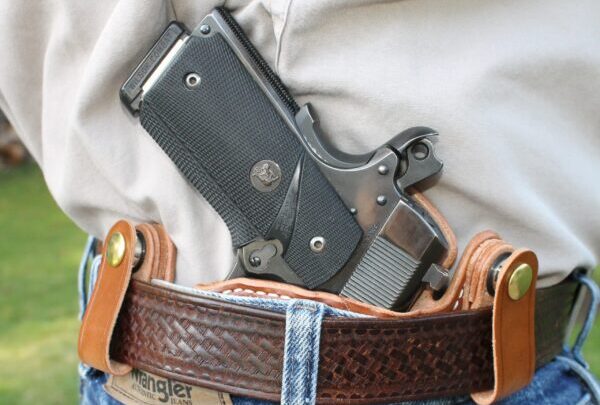
By Dave Workman
Editor-in-Chief
Among the top gun rights stories of 2022 was the passage of legislation in four states allowing permitless—or “constitutional”—carry of firearms, bringing the total to 25 states where no license or permit is required to go armed in public.
That is half of the United States, and one thing they all have in common is that they have Republican-controlled legislatures and a Republican in the governor’s office.
On the other hand, states under Democrat control have been scrambling to tighten restrictions on Second Amendment rights, especially after the Supreme Court’s June 23 ruling in the Bruen case.
This year, Alabama, Georgia, Indiana and Ohio all adopted Constitutional carry laws, which did not do away with permits or licenses—they are still available for citizens who travel and wish to take advantage of reciprocity agreements between the various states—but eliminated the need to have a card in the wallet saying you have permission to be armed in public.
There is a possibility that Florida will join the list in 2023, provided legislation can make it through the legislature and nobody rises in opposition from the firearms community.
Why is it called “constitutional carry?”
When the Bill of Rights was adopted in 1791, affirming and protecting the right to keep and bear arms via the Second Amendment, the carrying of arms was commonplace. Nobody required permits to carry guns and the notion probably had not occurred to anyone. It was not uncommon, especially on the western frontier, for settlers to be armed, for there was no organized law enforcement and there continued to exist the threat of hostilities, and having a gun also provided the opportunity to kill one’s own food should the opportunity arise.
Nowadays, right-to-carry advocates recall that bygone era and make credible arguments against the requirement to have a license or permit to exercise the right to bear arms. One of those arguments is that a license/permit mandate is nothing more than the charging of a fee, or even a tax, to exercise a right.
A full roster of the states with permitless carry laws is available at the website of the United States Concealed Carry Association (USCCA).
The states are Alabama (PC-21 as of January 1, 2023), Alaska (PC-21), Arizona (PC-21), Arkansas (PC-18), Georgia (PC-21 and 18 for members of the military as of April 12, 2022), Idaho (PC-18), Indiana (PC-18 as of July 1, 2022), Iowa (PC-21), Kansas (PC-21), Kentucky (PC-21), Maine (permits recognized), Mississippi (PC-18), Missouri (PC-19 or 18 for members of the military), Montana (PC-18), New Hampshire (PC-18), North Dakota (PC-18 for residents only and concealed carry only), Ohio (PC-21 as of June 12, 2022), Oklahoma (PC-21 or 18 for military), South Dakota (PC-18), Tennessee (PC-21 or 18 for members of the military), Texas (PC-21), Utah (PC-21), Vermont (PC-18), West Virginia (PC-21) and Wyoming (PC-21), according to USCCA.
Thus, “constitutional carry” refers to the ability of someone to legally carry a firearm the way citizens of the early United States, and even before that, the way it was done 242 years ago.
Permitless carry raises hackles among anti-gunners, who claim it endangers law enforcement—a preposterous argument considering that armed criminals already carry guns without licenses or permits—and that increases the potential for violence in everyday America. With more than 22 million people now licensed to carry in the U.S., according to the most recent estimate from the Crime Prevention Research Center. This number does not include possibly millions of people now carrying legally without a permit.
According to Everytown for Gun Safety—the Michael Bloomberg-backed gun prohibition lobbying group—permitless carry “is a dangerous policy that allows civilians to carry concealed, loaded guns in public without a permit. Removing the permit requirement eliminates a state’s ability to ensure that core public safety standards are preserved when people carry concealed guns in public places, including requiring a person to pass a background check and complete safety training.”
This trend toward constitutional carry can only continue if Second Amendment voters turn out and elect pro-rights lawmakers and governors, say permitless carry advocates.



